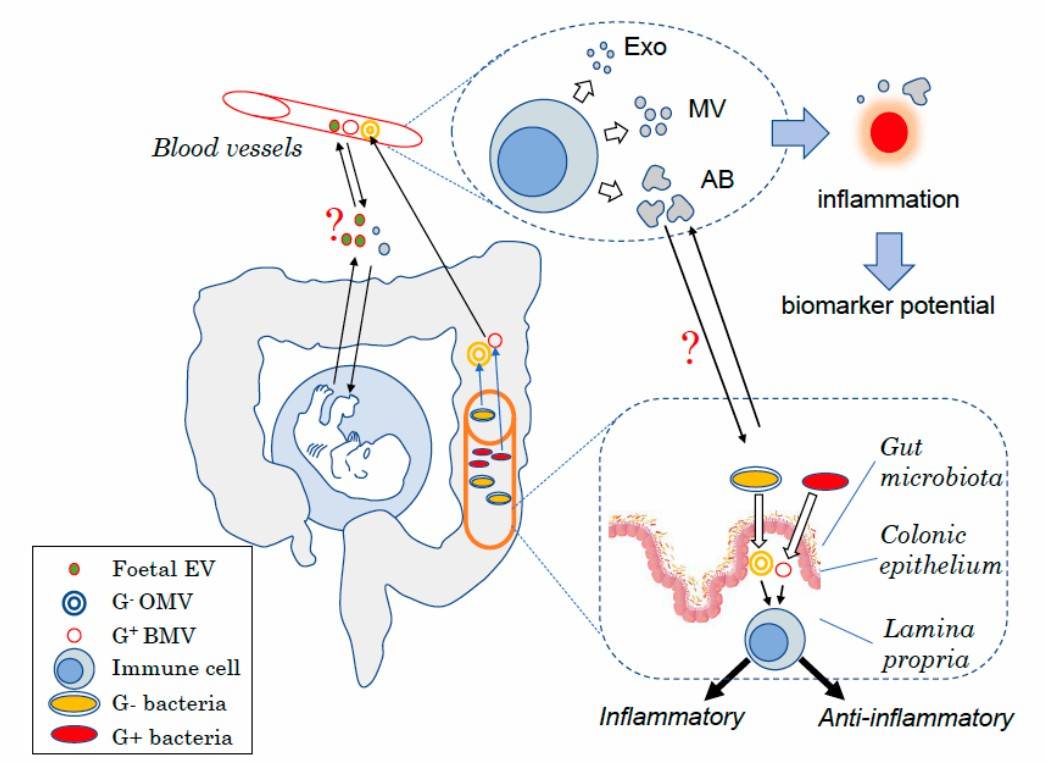Microorganism-derived Exosome Isolation and Development Service
Overview Services Features FAQs
In addition to conventional exosomes of animal origin and exosome-like vesicles of plant origin, bacteria, fungi, and protozoa have been found to produce vesicles of similar size to exosomes. Creative Biolabs provides customized isolation and development services for microorganism-derived exosome research.
Overview of Microorganism-derived Exosome R&D
|
Aspect
|
Details
|
|
Investigation of infection mechanisms
|
Mediating host immunity to infection: Bacterial-derived exosomes can enter non-phagocytic cells such as epithelial cells on the mucosal epithelial surface for the reciprocal exchange of luminal contents, thereby promoting autophagy and the release of inflammatory cytokines.
|
|
Involved in infection pathogenesis of pathogenic bacteria: Vesicles secreted by infected strains of Trypanosoma brucei mediate the transfer of antiserum-associated proteins to noninfected strains and carry glycoproteins that can fuse with mammalian erythrocyte membranes and induce their phagocytosis by macrophages, causing the development of anemia.
|
|
Involved in drug resistance transmission: Monilia albican biofilm-induced exosomes have a key role in biofilm drug resistance by facilitating the biogenesis of the biofilm matrix. Exosome-associated multiple drug efflux pumps may aid in the transient survival of sensitive bacteria in an antibiotic environment.
|
|
Disease Diagnosis and Treatment
|
As diagnosis markers: Extensive associations exist between different types of cancers and specific microbiota and their exosomes. Exosomes encapsulate larger information, are easy to preserve, have little interference from the assay matrix, and show clear differentiation across diseases.
|
|
As vaccines: Exosomes of salmonella induce the expression of CD86 and MHC-II-like molecules in dendritic cells as well as the production of TNF-α and IL-12, thereby stimulating in vivo protective B and T cell responses.
|
|
As therapeutic adjuvants and carriers: Exosomes secreted by Bifidobacterium longum significantly reduced the incidence of diarrhea in mice with food allergies. The outer membrane protein A of exosomes allows efficient enzyme delivery without altering phosphotriesterase activity.
|
|
Gut microbes and metabolic disease diagnosis
|
Exosomes derived from human commensal bacteria are used to analyze their associated gut microbes, providing new ideas for diagnosis and intervention in metabolic disorders.
|
|
Exosomes of the probiotic bacterium Akkermansia muciniphila are effective in reducing intestinal permeability in high-fat-fed mice.
|
 Fig.1 Host- and microbial-derived extracellular vesicles in humans.1
Fig.1 Host- and microbial-derived extracellular vesicles in humans.1
Microorganism-derived Exosomes Isolation Services
1. Microorganism culture
Select the appropriate medium and conditions to culture the target microorganisms. Microorganisms can be taken from bacteria, fungi, and protozoa.
2. Microorganism removal
Centrifuge the culture in a centrifuge tube to remove microorganism residue. Normally low-speed centrifugation is chosen to minimize the loss of exosomes.
3. Exosome extraction
-
Collect the supernatant from which the microorganisms have been removed and centrifuge it at high speed to precipitate the exosomes. Typically, exosomes can be purified by multiple centrifugation and washing steps.
-
Capturing various membrane vesicles in the bacterial culture medium based on affinity resin chromatography provides high yield and purity while removing small molecules and ions from the bacterial culture supernatant, providing an alternative to ultracentrifugation.
4. Screening and concentration
Screen the purified exosomes using filter membranes of appropriate pore size. Then, concentrate the exosomes using ultrafiltration or concentration devices.
5. Identification and characterization
The exosomes are examined and characterized using TEM and NTA. In addition, Western blot, mass spectrometry, and other techniques can be used to further characterize the protein or nucleic acid components of exosomes.
6. Exosome Endotoxicity Removal (Optional)
-
Lysozyme removes inflammatory components such as lipopolysaccharide.
-
Genetic engineering techniques to knock out specific bacterial genes encoding exosomal toxic proteins.
-
Removal of endotoxins to a limited range.
Features
-
Specialized Isolation Techniques: We employ advanced methods to isolate exosomes from various microorganisms, ensuring purity and yield suitable for downstream applications.
-
Tailored Development: Our services cater to specific research needs, offering customization in exosome characteristics such as size, cargo, and surface modifications.
-
Flexible Scale-Up Options: From small-scale pilot studies to large-scale production, we offer flexible solutions to meet varying research demands.
-
Comprehensive Reporting: Detailed documentation and analysis reports accompany each service, ensuring transparency and traceability of results.
FAQs
Q: What types of microorganisms do you work with for exosome isolation?
A: We specialize in isolating exosomes from a wide range of microorganisms, including bacteria, fungi, yeast, and algae. Our methods are optimized for each microorganism type to ensure efficient extraction and purification of exosomes.
Q: Can you customize the characteristics of the isolated exosomes?
A: Yes, we offer customization options for the isolated exosomes, including size selection, cargo loading (e.g., proteins, nucleic acids), and surface modifications (e.g., targeting ligands, imaging agents). These tailored features enable researchers to address specific research questions effectively.
Our Microorganism-derived exosome isolation and development services at Creative Biolabs empower researchers with reliable tools to explore the therapeutic and diagnostic potential of exosomes derived from microorganisms. To initiate a collaboration or request a quote, please reach out to our team.
Reference
-
Macia, Laurence, et al. "Host-and microbiota-derived extracellular vesicles, immune function, and disease development." International journal of molecular sciences 21.1 (2019): 107. Under Open Access license CC BY 4.0. The image was modified by revising the title.
For Research Use Only. Cannot be used by patients.
Related Services:

 Fig.1 Host- and microbial-derived extracellular vesicles in humans.1
Fig.1 Host- and microbial-derived extracellular vesicles in humans.1









